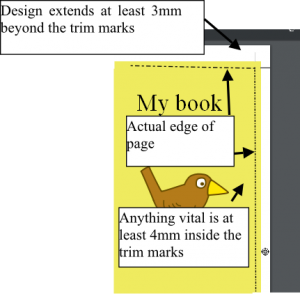If you’re a beta reader, one issue that you will come across sooner or later is a project that you just can’t get on with. So how do you break the news to the writer?
First, you need to decide whether the problem is yours or theirs. Could it be that you just don’t like the theme of the writing, or that something about it is hitting a sensitive spot? If so, then you could mention that and then either decline and return the project, or be as objective as you can despite your misgivings. It’s possible to write about the way a story is presented while at the same time cringing internally at the storyline.
If the problem is that you feel the writing is weak, or the storyline is too implausible, or something else related to the writing itself, then it’s important that you think carefully about the issues you find. Feedback in this case is even more important than if you enjoy every aspect of the story, but it needs to be specific. “I hated this story” is unhelpful. “I found this story totally implausible” helps a little. “I found it very unlikely that he would want to kiss her two minutes after finding her standing over his beloved mother’s body with a gun in her hand” is something that can be dealt with much more effectively. If you really have to return a piece of work unread, or only partly read, explain as sensitively as you can why you had such a problem with it. This might be as simple as “I’m sorry, but the number of spelling and grammar errors in this text make it very hard to read, as I’m having to constantly stop and work out what you’re trying to say. I suggest that you at least run spell check before submitting a piece of work to a reader.”
It’s natural to worry when you feel you have lots of negative feedback for a writer. Try to praise the aspects of the writing that you find do work – even if you have to look really hard. They’ve put a lot of work into the writing, and it’s disheartening to be given just a list of errors. Remember the phrase “even better if…”. Try to raise questions rather than making criticisms. “Did you mean…”, “I’m not quite sure what you mean when…”, “Have you considered…” Explain the effect their writing has: “The way you jump from one person’s thoughts to the next means there’s no chance for tension to build up, because I know what they’re both feeling all the time. Have you thought about sticking to her point of view for the scene, so that we only know his reaction and not the reason for it?”
Remember that you’re not their cheerleader. Too much focus on the positive and too little on the negative could give them a mistaken idea of their own capabilities and will not help them develop their writing. Any writer who publishes work will be in for criticism via reviews, and some of it will probably be harsh. You can help to prepare their work by raising the issues that you see. After all, they’ve asked for feedback on their work, and that means they should be expecting to receive information to help them.
Adapt your feedback to the writer’s background and experience. If you’re reading for someone who’s already published several pieces of work, then they should be used to receiving feedback, and should readily understand terms such as foreshadowing, POV, third person. If they’re showing their writing to someone for the first time, then you need to recognise that and encourage them forward. This might involve explaining the terms you use, recommending they find a writing group, or pointing them towards resources, but shouldn’t be praising them to the point where they feel they’re ready to hit the publish button right now.
Above all, don’t worry too much: some writers do find it very difficult to take any sort of criticism. That doesn’t mean that you should become upset over their response. As long as you’ve been careful and sensitive over your feedback, then their reaction is not your problem. Just mark it down to experience, consider briefly if you could have handled it any differently, and move on. There are plenty of writers out there who would value your feedback.

